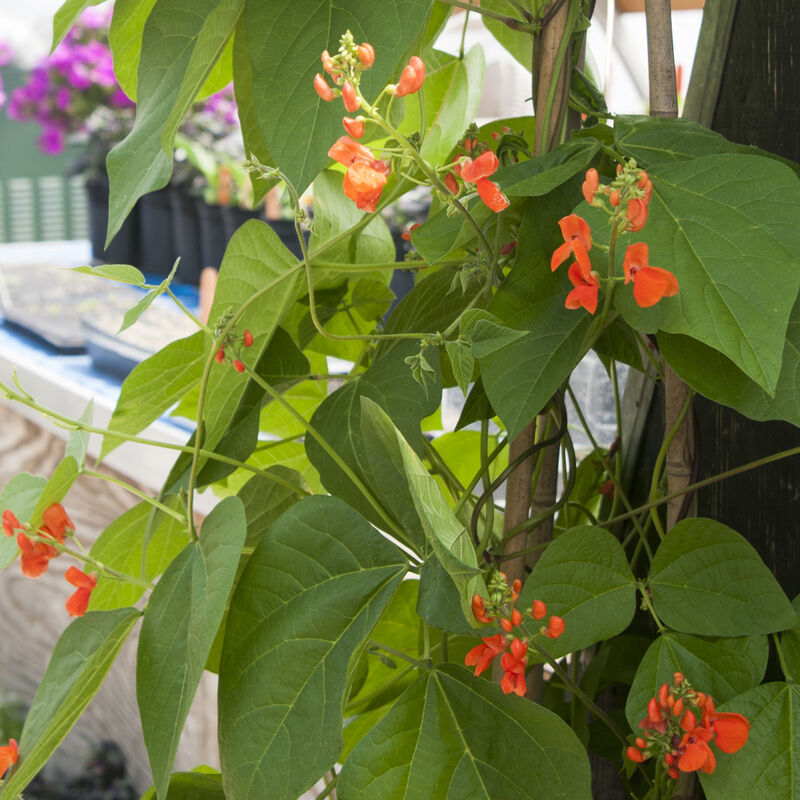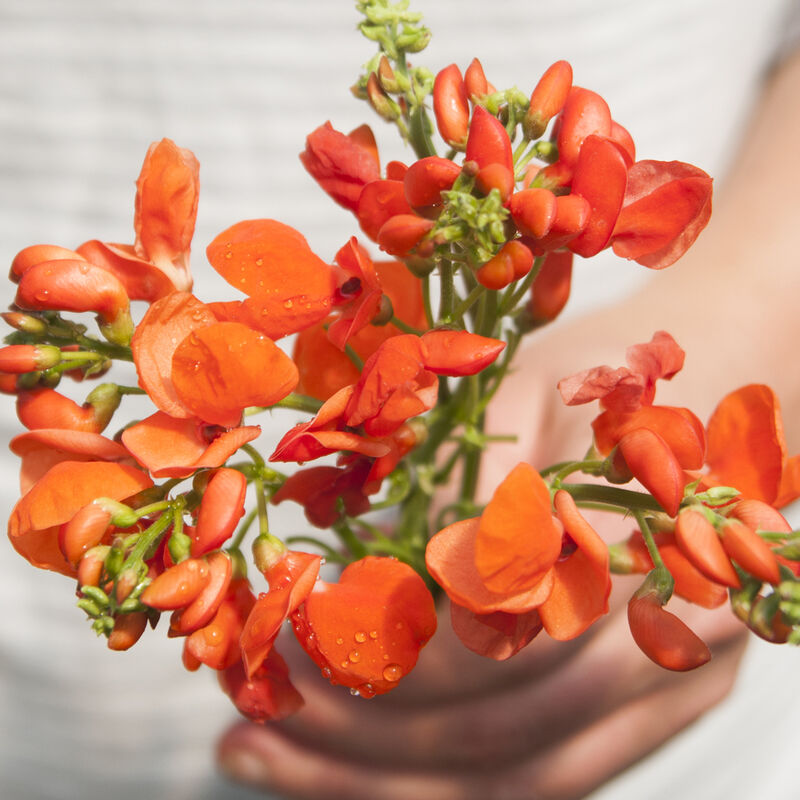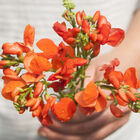Scarlet Runner Bean Flower Seed
Scarlet Runner Bean Flower Seed
Striking edible flowers.
Scarlet flowers against green, heart-shaped foliage. Rapid climbers. Beans are edible and delicious when young. Keep pods picked for continuous bloom. May simply be called scarlet runner. A hummingbird favorite.Specs:
- This product does not ship to the following countries: United Arab Emirates, Austria, Australia, Barbados, Belgium, Bulgaria, Bermuda, Bahamas, Switzerland, Cyprus, Czech Republic, Germany, Denmark, Estonia, Spain, Finland, France, United Kingdom, Greece, Hong Kong, Croatia, Hungary, Ireland, Iceland, Italy, Japan, Republic of Korea, Kuwait, Cayman Islands, Lithuania, Luxembourg, Latvia, Malta, Netherlands, Norway, New Zealand, Oman, Poland, Portugal, Qatar, Romania, Saudi Arabia, Sweden, Singapore, Slovenia, Slovakia, San Marino, Thailand, Trinidad and Tobago, Taiwan, Ukraine.
DAYS TO GERMINATION:
4-7 days at 60-70°F (16-21°C).SOWING:
Transplant: Sow 2-3 weeks before last frost. Plant 2 seeds 1" deep in individual cell packsor containers. Thin to one plant per cell or pot. Harden off and transplant outside after the last frost.
Direct seed: After last frost, when the soil temperature is at least 60°F (16°C), sow about 6 seeds per foot, 1" deep. When seedlings have true leaves, thin to 4-8" apart.
Use a nitrogen-fixing inoculant for increased flowering and bean yields. Trellis or other support is necessary.LIGHT PREFERENCE: Sun.
SOIL REQUIREMENTS:
Fertile soil with high levels of humus.PLANT SPACING:
4-8".HARDINESS ZONES:
Annual.HARVEST:
Edible flowers: Harvest when the flower show strong color, as buds or as fully open flowers. Unopened buds can be stored in the refrigerator for 2-3 days on slightly damp towel in covered container. Open flowers should be used immediately. To encourage continued flowering keep the beans picked.USES:
Edible flower. For covering arbors, walls, and fences.SCIENTIFIC NAME:
Phaseolus coccineusJohnny's is committed to your success, every step of the way.
We want you, our customer, to be 100% satisfied with all of our seeds, tools, and supplies.
If anything you purchase from us proves unsatisfactory, we will either replace the item or refund the purchase price.








